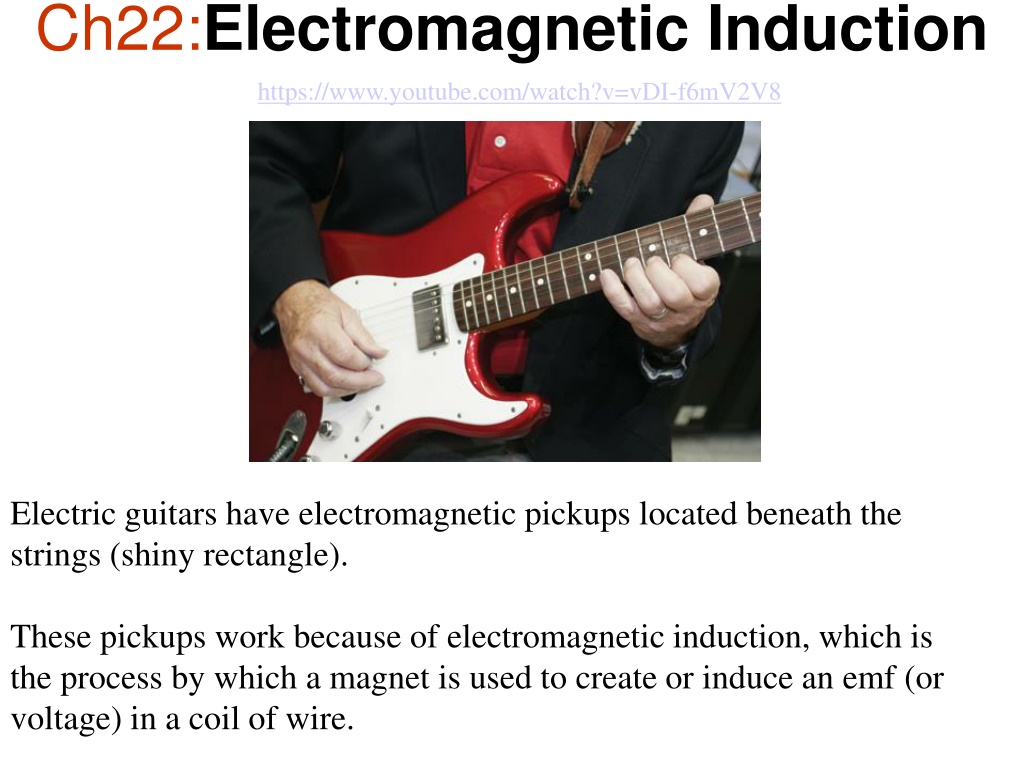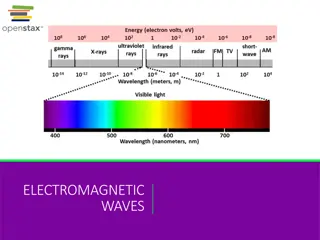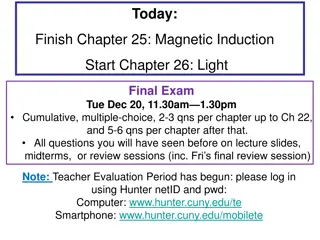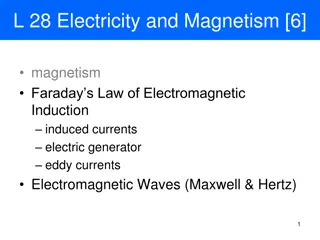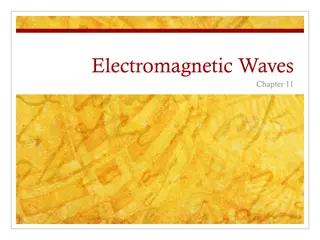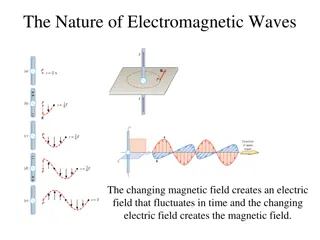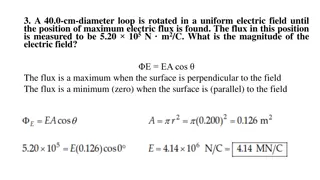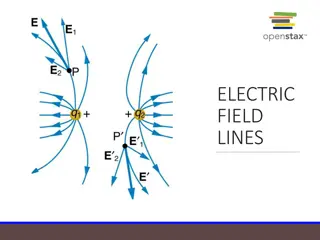Electromagnetic Induction in Electric Guitars
Electric guitars utilize electromagnetic pickups beneath the strings to produce sound through the process of electromagnetic induction. This phenomenon involves inducing an EMF in a coil of wire using a magnet, creating a current when the magnet moves relative to the coil. The concept of magnetic flux, Faraday's Law of Electromagnetic Induction, and Lenz's Law are also explored in the context of induced current and EMF. The content covers practical examples and theoretical principles related to the interaction between magnets, coils, and magnetic fields in electrical systems.
Download Presentation

Please find below an Image/Link to download the presentation.
The content on the website is provided AS IS for your information and personal use only. It may not be sold, licensed, or shared on other websites without obtaining consent from the author.If you encounter any issues during the download, it is possible that the publisher has removed the file from their server.
You are allowed to download the files provided on this website for personal or commercial use, subject to the condition that they are used lawfully. All files are the property of their respective owners.
The content on the website is provided AS IS for your information and personal use only. It may not be sold, licensed, or shared on other websites without obtaining consent from the author.
E N D
Presentation Transcript
Ch22:Electromagnetic Induction https://www.youtube.com/watch?v=vDI-f6mV2V8 Electric guitars have electromagnetic pickups located beneath the strings (shiny rectangle). These pickups work because of electromagnetic induction, which is the process by which a magnet is used to create or induce an emf (or voltage) in a coil of wire.
22.1 Induced Emf and Induced Current (a) When there is no relative motion between the coil of wire and the bar magnet, there is no current in the coil. (b) A current is created in the coil when the magnet moves toward the coil. (c) A current also exists when the magnet moves away from the coil, but the direction of the current is opposite to that in ( b).
Inducing Current With a Coil in a Magnetic Field
22.2 Motional Emf The Emf Induced in a Moving Conductor
22.3 Magnetic Flux Graphical Interpretation of Magnetic Flux The magnetic flux is proportional to the number of magnetic flux lines passing through the area.
A General Expression for Magnetic Flux = = Cos ( ) B A B A The SI unit of magnetic flux is the weber (Wb), named after the German Physicist W.E. Weber (1804-1891). 1 Wb = 1 T.m2.
EXAMPLE 4: Magnetic Flux A rectangular coil of wire is situated in a constant magnetic field whose magnitude is 0.50 T. The coil has an area of 2.0 m2. Determine the magnetic flux for the three orientations, shown below.
22.4 Faraday's Law of Electromagnetic Induction Michael Faraday found experimentally that the magnitude of the induced emf is proportional to the rate at which the magnetic flux changed. Faraday s law can be written as, = = ; . N B A t where N is the number of turns in the loops, A is the area of one loop, is the induced emf, and B is the perpendicular component of the magnetic field.
22.5 Lenz's Law = = ; . N B A t The SI unit for the induced emf is the volt, V. The minus sign in the above Faraday s law of induction is due to the fact that the induced emf will always oppose the change. It is also known as the Lenz s law and it is stated as follows, The current from the induced emf will produce a magnetic field, which will always oppose the original change in the magnetic flux.
Determining the Polarity of the Induced Emf 1.Determine whether the magnetic flux that penetrates a coil is increasing or decreasing. 2.Find what the direction of the induced magnetic field must be so that it can oppose the change in flux by adding to or subtracting from the original field. 3.Having found the direction of the induced magnetic field, use RHR-2 (see Section 21.7) to determine the direction of the induced current. Then the polarity of the induced emf can be assigned because conventional current is directed out of the positive terminal, through the external circuit, and into the negative terminal.
An Induction Stove The water in the ferromagnetic metal pot is boiling. Yet, the water in the glass pot is not boiling, and the stove top is cool to the touch. The stove operates in this way by using electromagnetic induction.
An Automobile Cruise Control Device
Electric Generator
